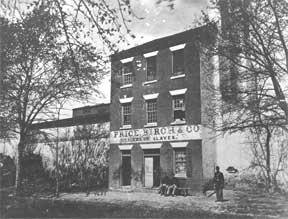Missouri Compromise

This was the first major comromise between those states favoring slavery and those opposing slavery. Under the terms of the agreement, Missouri was to be admitted as a slave state, while Maine was admitted as a free states. The rest of the territory acquired from France north of the latitude 36'30 would be free states, while south of that point would be slave states.
In 1819, Missouri's population growth rendered it eligible for statehood. With a standing slave population of 10,000, it was expected to join the Union as a slave state. However, James Tallmadge, a New York congressman, proposed the Tallmadge Amendment to the Missouri Enabling Act, which was intended to grant Missouri statehood. This amendment aimed to prohibit any further importation of slaves into Missouri and establish a gradual emancipation of existing slaves. The proposal sparked a fierce debate in Congress that foreshadowed the Civil War.
Opponents of the amendment warned of potential national disintegration if the measure passed. Northern congressmen, on the other hand, voiced their support for the amendment, arguing that the refusal to restrict slavery would be a profound moral failure. They believed it would be an opportunity missed to prevent the deep rooting of a morally repugnant institution.
Southern congressmen, however, unanimously opposed the amendment. While they defended slavery, they also framed the issue as one of states' rights. John Scott, a Missouri delegate, questioned whether Missouri's citizens would enjoy the same privileges as other states' citizens under the proposed restrictions.
The Tallmadge Amendment was approved by the House but rejected by the Senate. As a result, the decision regarding Missouri's status was postponed until the next Congress. Meanwhile, public sentiment was galvanized. In the North, anti-slavery rallies were organized despite economic turmoil. Republicans, however, intensified their efforts to secure Missouri's unconditional admission during the Congressional recess.
Simultaneously, key figures like President Monroe and Henry Clay sought a compromise. Maine, previously part of Massachusetts, had sought statehood for years and received legislative approval in June 1819. The Senate linked the admission of Maine and Missouri in one bill. However, this alone did not secure Missouri's admission.
Senator Jesse Thomas of Illinois, a Tallmadge Amendment supporter, proposed that Missouri be admitted as a slave state, but any state north of the 36°30′ latitude (Missouri's northern border) be admitted as a free state. Despite continued opposition from the Northern Congressional delegation, enough northern votes were secured for Missouri's admission. Consequently, in 1819, Missouri was admitted into the Union, marking a significant compromise in the ongoing national debate over slavery and states' rights.
 >
>